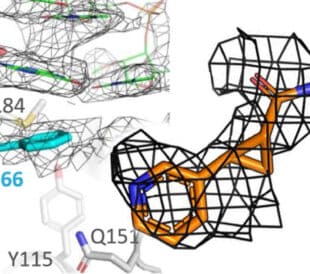Getting started in cryo-EM
Looking for an introduction to cryo-EM, or training on the latest cryo-EM equipment? Two professors at Purdue University say virtual reality is the way to go.
Across industries, and especially when used for education and training, the benefits of virtual reality are clear—it can be done remotely, the environment is safe, and the ‘hands on’ training is incredibly realistic.
Introduction to cryo-EM at Purdue University
In 2018, Purdue University’s cryo-EM facility was awarded a grant from the National Institutes of Health (NIH) to develop innovative cryo-EM training tools. The PIs on this grant include Dr. Wen Jiang, Dr. Victor Chen, Dr. William Watson, and Dr. Tommy Sors.
The proposal was this: Purdue would develop virtual reality training tools for state-of-the-art cryo-EM equipment. By introducing new users to equipment through virtual reality, there would be no risk of harming expensive materials, and the training wouldn’t take time out of regular instrument usage—a major hurdle in current training regimes, says Purdue.
This summer, professors Chen and Jiang joined Thermo Fisher Scientific to discuss their NIH-funded system: CryoVR—an innovative way to familiarize and train new users with cryo-EM equipment in a safe, low-risk environment.
“The benefit is to learn by doing,” said Chen. “The traditional way of learning how to use cryo-EM equipment is by watching a training video or looking at a manual, but you lack the chance to be hands-on. We know from our own experience that learning by doing is a very effective way to train.”
Cryo-EM training with CryoVR
People trained by CryoVR are meant to walk away with the ability to:
- Demonstrate familiarity with the sequence of operations needed for major cryo-EM devices prior to the one-on-one hands-on training on physical instruments.
- Demonstrate reduced training time on physical instruments needed to obtain approval from the trainer for the independent operation of the physical instruments.
- Demonstrate a conceptual understanding of safety procedures to avoid key errors and know how to respond appropriately in the event of errors.

CryoVR training on the Thermo Scientific Vitrobot System
“We have built a guided tutorial, unguided practices, and exam modes into CryoVR,” said Jiang. “The exam mode scores user operations against (standard operating procedures) and if the user could get 100% scores, the CryoVR system will issue a Merit Badge that is honored by National Cryo-EM Centers. The trainer can thus expect the user is already familiar with the operations and instead focus on polishing the details.”
The team plans to expand CryoVR training modules to include correlative light and electron microscopy and tomography, says Chen. “CryoVR will focus on tasks that require hands-on operation of physical instruments. That will include sample preparation tasks.”
While current VR technology still cannot vividly simulate fine haptic feedbacks and is not able to train fine motor skills of the hands and body during operation, researchers have found that in terms of procedural knowledge training, a VR environment can be as effective as a real environment.
To learn more about CryoVR, watch the recent webinar by professors Yingjie Victor Chen and Wen Jiang of Purdue University, Cryo-EM training with Purdue’s CryoVR virtual reality system, and check out our Customer Insights podcast episode between the pair and Thermo Fisher Scientific Materials and Structural Analysis Division president John Sos.
//
Elise Nguyen is a market development manager for electron microscopy at Thermo Fisher Scientific.
Subscribe Now to receive new Accelerating Microscopy posts straight to your inbox.




Leave a Reply